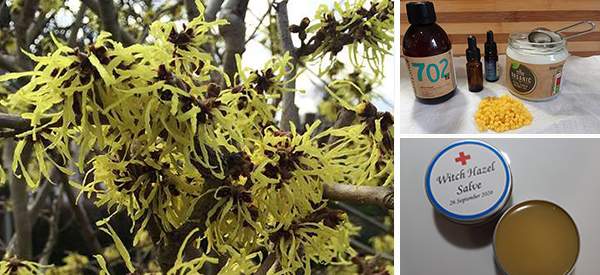
DIY Witch Hazel Salve
Witch Hazel (Hamamelis Virginiana) is a large, flowering shrub that is endemic to most of North America and Asia. However, it is now also grown across much of Western and Central Europe.
The leaves, twigs, and bark are used to manufacture a clear liquid that is sold commercially and is used in the preparation of a range of health and beauty products, including in DIY or home-made remedies.
What is Witch-Hazel Used For?
Witch-hazel contains gallic acid, which is an anti-inflammatory, and tannins that have antioxidant properties. As a result, preparations made using this plant are used to ease a range of symptoms and conditions. The focus of this article, though, is on Witch Hazel Salve which is good for skin-related and external problems:
- Inflammation and the pain and swelling that often goes with it
- Mild bacterial infection of the skin

- Minor bleeding
- Mild itching and skin irritation
- Cuts, scrapes, and other minor wounds
- Hemorrhoids
- Insect bites and stings
- Cold sores.
There is anecdotal evidence that witch hazel—in one form or another—eases bruising, diarrhea, sore throats, some post-menstrual symptoms, and improves overall skin tone and health. However, further study is required to make these claims with greater certainty.
How To Make a Witch Hazel Salve
This salve is easy to make and the most useful addition to your home, herbal first-aid kit.
Ingredients
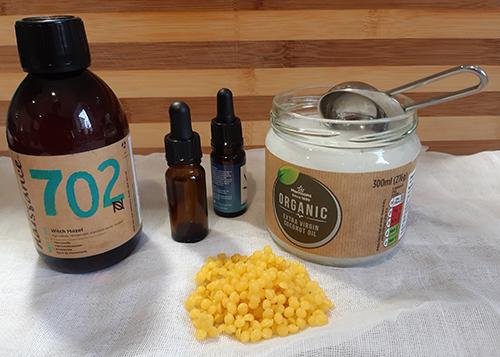
- 1 tablespoon witch hazel
- 2 – 3 tablespoons beeswax pellets, depending on how soft you want the salve. The more used, the firmer the salve will be.
- ½ cup of coconut oil.
You can also add one or a mixture of the following essential oils:
- 12 – 15 drops of Tea Tree oil
- 10 – 12 drops of Lavender oil
- 8 – 12 drops of Lemon oil
- 2 – 3 drops of Vitamin E oil.
Each of these optional oils offers further properties that are useful when treating the listed skin problems. Vitamin E, however, is a useful preservative that may extend the shelf-life of your DIY salve.
It doesn’t matter what extras you choose, but don’t add too much additional oil or your finished salve may be too greasy.
Method:
- Place 2 inches / 5 centimeters of water into a saucepan/pot. Bring the water to a simmer and keep the heat low.
- Put the coconut oil and the beeswax into a metal bowl
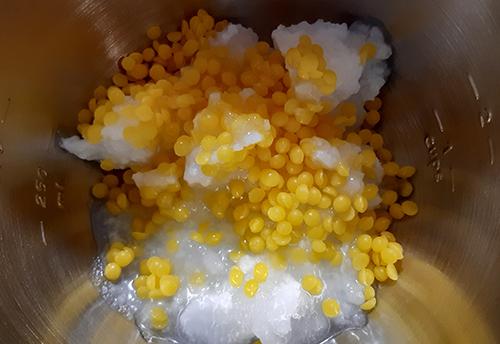
- Place the bowl inside the pot, ensuring no water gets into the mixture
- Melt the oil and beeswax. Don’t let the mixture get too hot or the oil will burn.
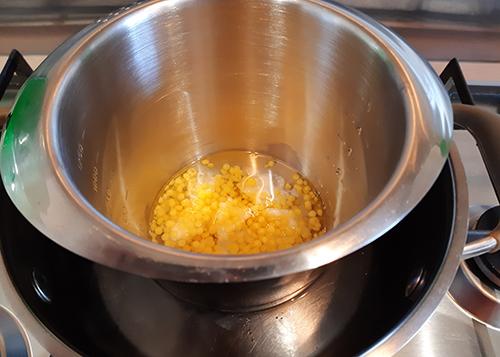
- Remove the bowl from the pot
- Add the essential oils you have chosen
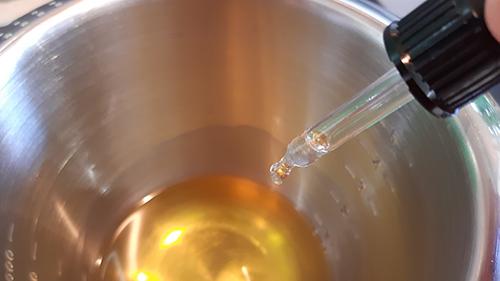
- Stir the mixture well using a spoon or a hand mixer
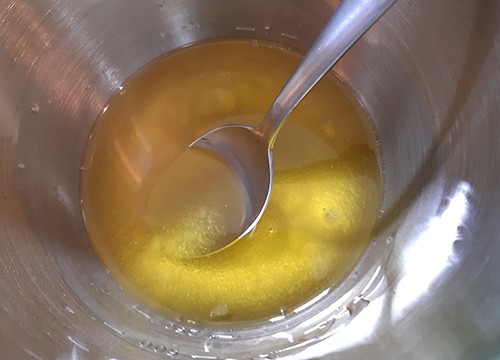
- Add the witch hazel and the vitamin E oil if you are using some
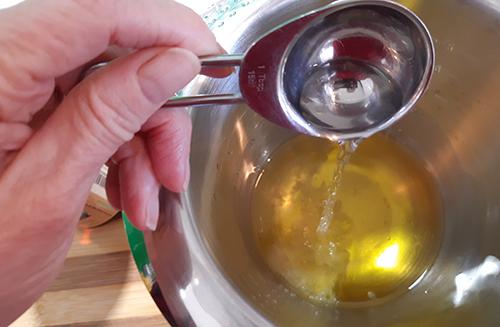
- Mix all the ingredients well
- Place the mixture into aluminum or glass jars and put the lid in place
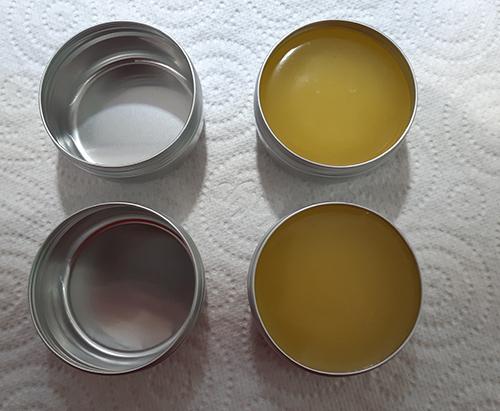
- Label and date the jars of salve.
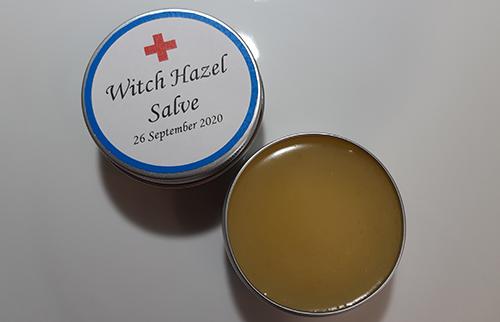
You can use a double boiler if you have one instead of a pot and a bowl. Also, an electric mixer will achieve the smoothest consistency, but a spoon or spatula also works.
Using Witch Hazel Salve
It’s advisable to use a cotton bud or gauze to apply the salve rather than your finger even if you have washed your hands. This prevents dirt and bacteria from being introduced into the ointment.
Apply a small amount of the salve to the damaged skin. With both adults and children older than 2, you can use the ointment twice a day until the wound or problem has healed.
If you are using the salve to treat the pain, swelling, and itching caused by hemorrhoids, rub the ointment gently onto the affected tissue twice a day and after each bowel movement. Don’t apply it more than 6 times a day, though.
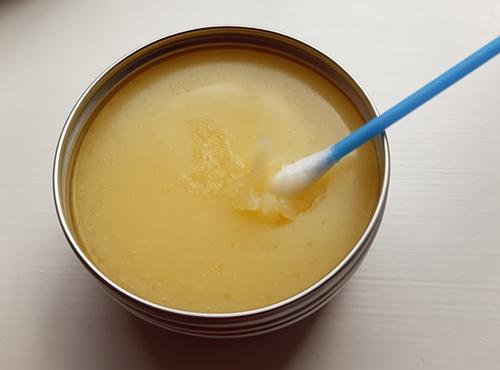
How Do I Store Witch Hazel Salve and What is The Shelf-Life?
A home-made salve like this usually has a shelf-life of a maximum of 8 weeks. To increase this to an impressive 6 months add vitamin E to the mixture when you make your salve.
You don’t necessarily need to store it in the fridge, but it must be stored somewhere cool or it will become a little liquid and will spoil faster.
Adverse reactions to witch-hazel and uncommon but they do happen. There are individuals that will experience an adverse or an allergic reaction. Fortunately, these reactions are usually mild. Interestingly, skin irritation is more likely to be due to the essential oils than the witch-hazel.
However, if you haven’t used this plant before, it’s a good idea to apply some salve to a small area of skin first to make sure there’s no problem. In addition, witch-hazel, even a topical application, is not recommended for babies and children under 2.
Although other witch-hazel preparations (toner, tea, etc.) can pose additional risks when used long-term, this salve is for use as a first-aid ointment and shouldn’t cause any problems. Quite the opposite, in fact: it is a useful, gentle addition to your medicine chest at home.
You may also like:
 DIY Cracked Hands and Feet Salve
DIY Cracked Hands and Feet Salve
A Natural DIY Antibiotic Salve Recipe to Keep Around (Video)
7 Benefits and Uses of Witch Hazel






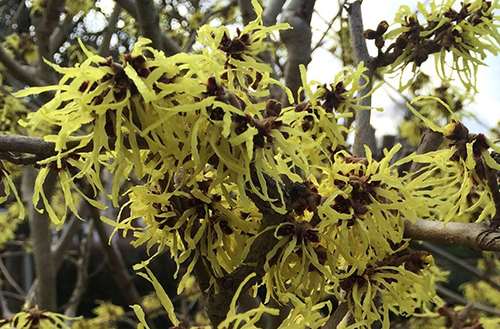

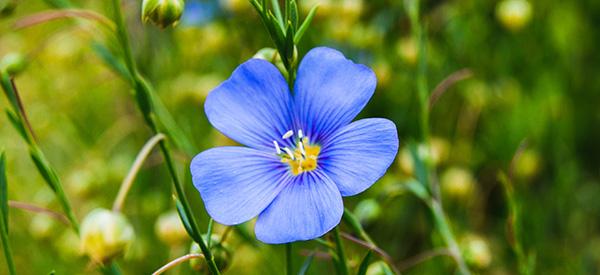
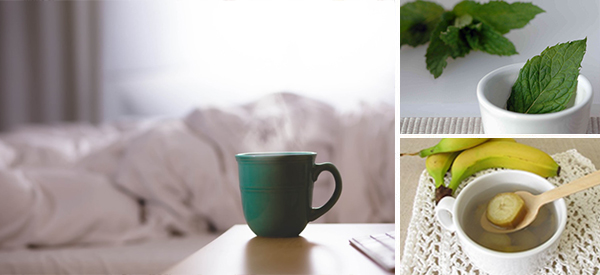
My daughter is allergic to coconut oil. What can I use instead of the coconut oil?
Hi Kelsey,
Thank you for your comment.
You can substitute Coconut Oil with either:
Almond oil, Avocado oil, Hemp seed oil, or Grapeseed oil.
God bless!
Thank you for the recipe it, sounds great. I was wondering if salves can be frozen, say in ice cube trays, and thawed when needed. I do that with my elderberry syrup, since you never know when it’s needed.
Hi Lorelei,
There is nothing wrong with keeping slaves in the freezer as well, however, they have a very long shelf-kife anyway. You can keep your salves and balms in the refrigerator, especially in the summer to greatly extend the useful life of your products.
God bless!
Aren’t Tea Tree oil and Melaleuca oil the same?
Found this online……Tea tree oil, also known as melaleuca oil, is an essential oil that comes from steaming the leaves of the Australian tea tree. When used topically, tea tree oil is believed to be antibacterial. Tea tree oil is commonly used to treat acne, athlete’s foot, lice, nail fungus and insect bites. Tea tree oil is available as an oil and in many over-the-co…
See more on mayoclinic.org
What a fantastic idea with the elderberry syrup-to freeze it in dose size quantities!
Melaleuca oil Vs Tea tree oil
I use Dickinson’s 100% natural distilled witch hazel as a toner. Would that work in this recipe?
I was wondering how you learned so much about herbals and wild medicinal plants. What kind of training did you receive, and what qualifications are necessary to give health related advice, plus how to use such an abundance of wild plants as food. and/ or medicine. Thanks
How do I extract the witch hazel from the plant?
You take a clean jar, add the plant material to it about 2/3 and fill it with the highest proof alcohol (drinking). Usually vodka (as it doesn’t give off any flavor). (although when I make my vanilla extract I use rum) Let it sit for 6-8 weeks, turning occasionally to make sure all the plant material stays under the alcohol. When done, strain and put the leftover plant material in the compost, saving the liquid. Then you have your own witch hazel (or any other plant) extract.
Hi! I’m new to this and was wondering what brand of oils do you recommend? I want to make sure that I am getting something pure. Any advise is greatly appreciated! Thank you
I keep witch hazel liquid on hand. Can I use it rather than the plant?
Where is the source for your statement that long term use of witch hazel toner and tea poses risks?
Why no application more than 6 times per day?
For a salve that takes a bit longer to make: you can also infuse your oils with witch hazel plant for 6-8 weeks and use the infused oil to make the salve.
Salves usually have a much longer shelf life than listed here. As long as there is NO WATER.
Witch hazel extract contains plant material and alcohol, so there is no reason to assume its shelf life is only 8 weeks. The alcohol preserves it. Olive oil does turn rancid quickly, so I wouldn’t use it. Just be sure to use a stable oil that DOESN’T go rancid quickly.
Jojoba (actually a wax) Sweet Almond and Fractionated or regular Coconut oils are 3 good ones.
Hello,
Can this Witch Hazel Salve be inserted into the rectum for hemorrhoids?
What is a good recipe for hemorrhoid removal or relief?😶🌫️